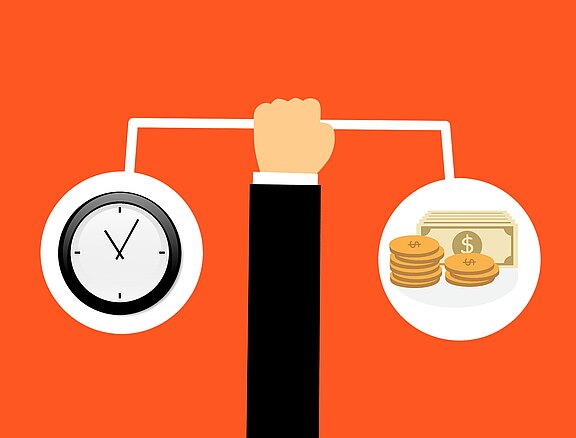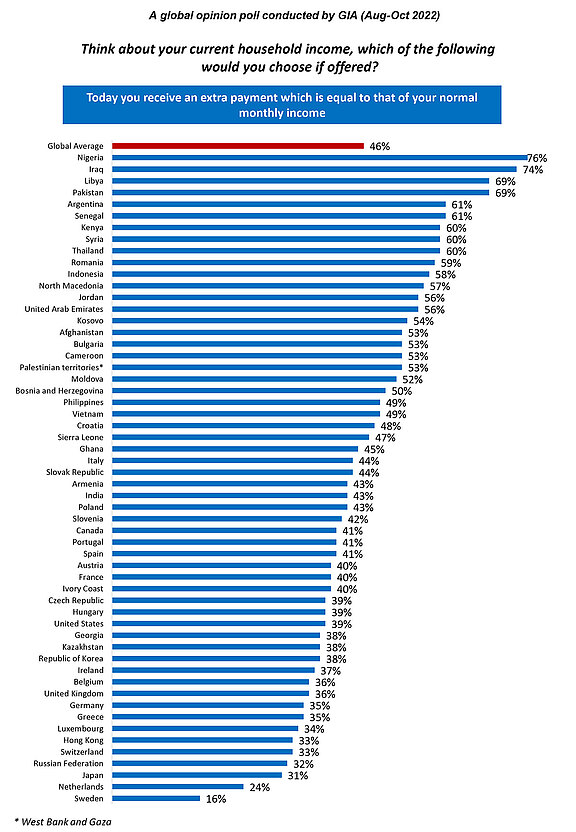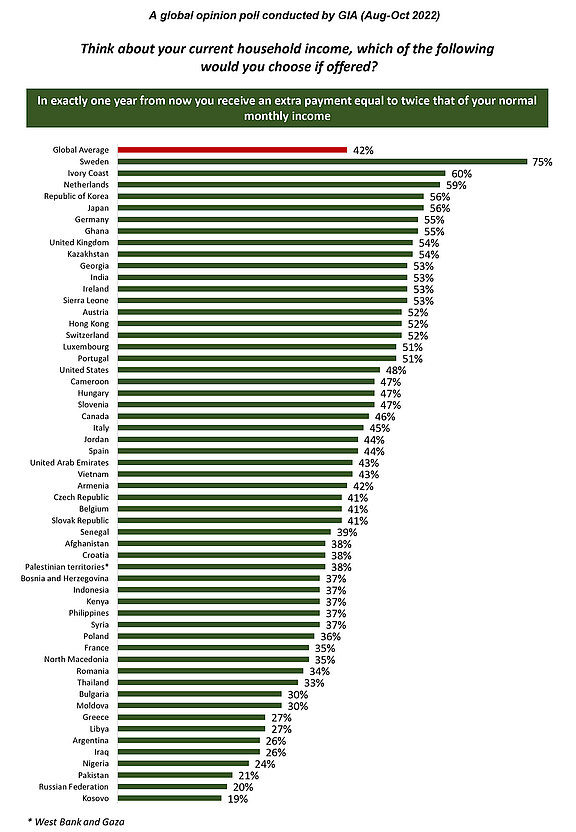Data is from a special poll conducted by Gallup International Association (GIA) in 56 countries covering over two thirds of the global population (and more than 90% of those countries which are free to conduct and publish opinion research). The poll celebrates GIA’s 75th anniversary.
The respondents were asked to think about their current household income and choose between receiving an extra payment today, equaling their normal monthly income, or receiving an extra payment, equal to twice their monthly income, but in a year. The question refers to a popular notion in psychology and behavioral economics – present bias or our tendency to prefer a smaller immediate prize over a greater prize in the future.
Results show a rather divided opinions around the world – 46% show a present bias, while 42% are more prone to place their future self in greater importance.
With immediate financial struggles perhaps top of mind, people from lower income countries seem more prone to choose some reward now, despite it being smaller – 53% vs. 42%. The higher the national income, the more prone to express preferences towards a greater reward in the future – 38% vs. 48% in the wealthiest countries.
Age seems to have a rather insignificant effect on respondents’ views, although younger generations seem a bit less prone to exhibiting present bias. Personal income and education seem more defining in people’s attitudes on future wellbeing-present improving dilemma. The higher the income and education, the lower present bias orientations.
The regions of MENA and Latin America are leading the present bias ranking – with shares of over 60% confirming they would rather receive one monthly payment now. On the other end of the scale are the EU and North America – shares of around 40%.
Nigeria, Iraq and Pakistan – top the list with 76%, 74% and 69% – showing present bias. World’s richest and more developed countries show least present bias – 16% in Sweden, 24% in the Netherlands, 31% in Japan.
Of note is the case of the USA and the Russian Federation. People in Russia for instance show a rather small present bias (32%), but also the greatest share of respondents, who cannot choose an option – 48%. The remaining 20% express preferences towards a greater reward in the future. While those in the USA are also among the nations that show a lesser incline towards present bias – 39%, with 48% oriented towards the future (and 14% undecided).
Overall it seems that, together with the answers to the questions “How far is the future?” and “How much do I need the money right now?” uncertainty also defines our reward preferences.





